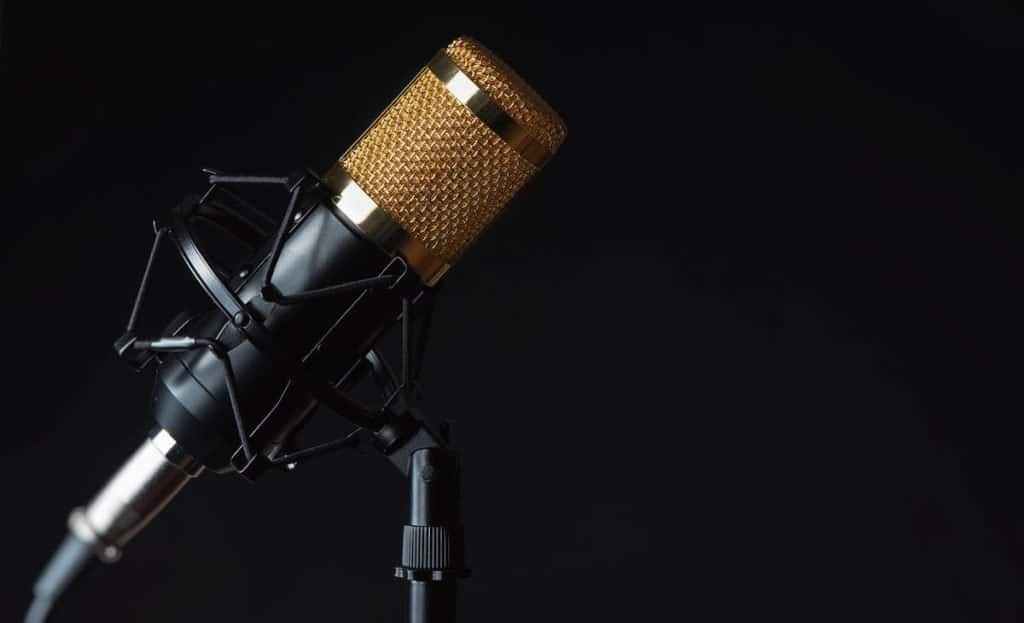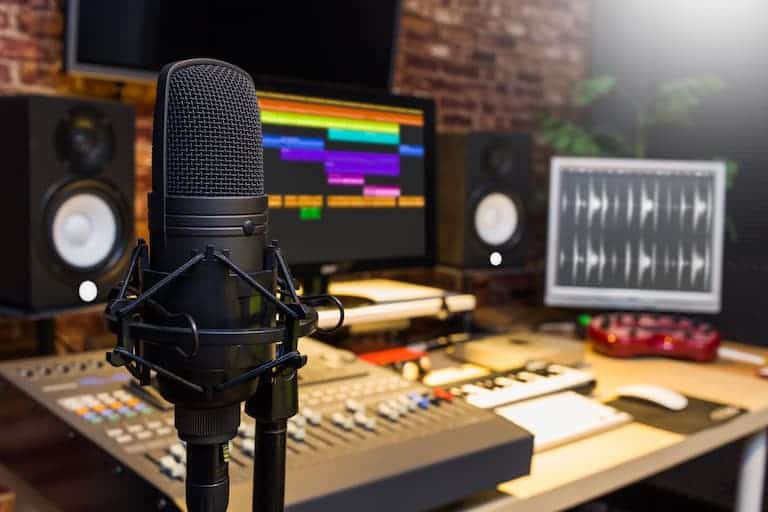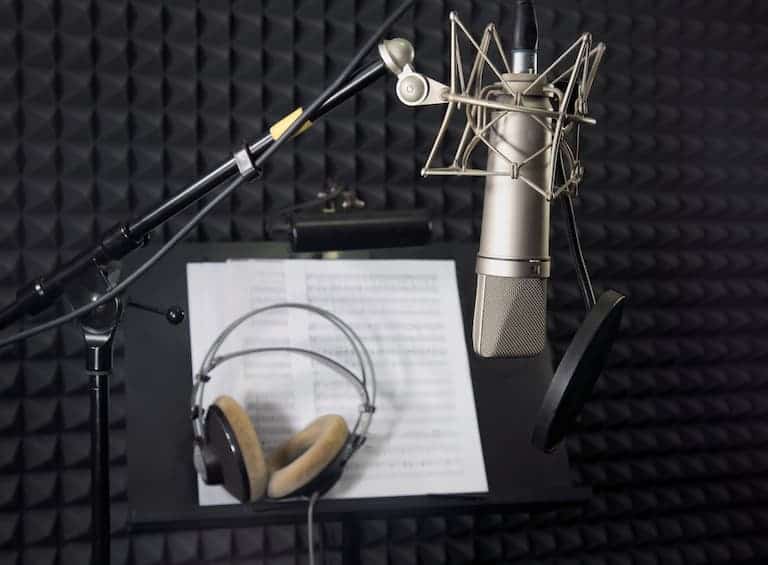As a home studio owner, your microphone is the heart of your recording sessions, but if it bails out on you and suddenly becomes silent, it can be confusing to know how to fix it.
Here are some of the reasons why the mic suddenly gets quiet:
- Improper positioning of the sound devices or the person
- Poor power supply to the mic
- Bad cable connections
- Low volume on the mic or in the sound settings
- The pad switch is on
- Lack of compatibility between hardware and software
- Poor quality mic
- Damage to the mic
In this article, I’ll explain how all the above issues arise. I’ll also offer you some possible solutions to each of them.

1. Improper Positioning of the Sound Devices or the Person
Most condenser microphones are unidirectional, which means they pick up sound from a particular direction. This design prevents collecting unnecessary sounds from the surroundings, mainly when used at home.
This means that whatever you’re recording should be well directed to the mic to get a good sound. Placing your mic far away from you or the other hardware can lead to poor sound quality.
The mic also has a component known as a backplate that vibrates when hit by sound waves. Its sensitivity increases the closer you are to the mic. Therefore, if the sound source isn’t close enough, the audio output might be very low.
Test your mic to find out where you can have the best audio output, as this can vary in different microphones. Ensure that you face the mic directly and record from a reasonable distance of around 6 – 12 inches (0.5 – 1 foot) to prevent your mic from being quiet.
2. Poor Power Supply to the Mic
An inadequate power supply can lead to the mic getting quiet. During audio transmission in a mic, a power supply is required to move the plates in the mic. These plates transmit the audio signals from the mic using phantom power.
Phantom power is sent as direct current of 48 V from your audio interface, mixer or preamp through your microphone cables to your mic. However, the plates in a condenser microphone store this power for a short time and therefore require a continuous power supply. When phantom power is cut off, the mic will remain quiet.
To power your mic again, connect it to your audio interface, mixer, or preamp and turn on phantom power. The phantom power switch is usually labeled 48 V.

3. Bad Cable Connections
If a mic isn’t connected correctly, it could get quiet. The poor connections could be due to incorrect cable placement, defective cables, or forgetting to connect some power cables. This can lead to low-signal audio recordings, which isn’t particularly convenient in a studio setting.
Ensure that all the cables are correctly inserted in their slots to avoid poor connections. Otherwise, this can lead to an inadequate power supply and a low sound output.
The microphone cable is often an XLR cable that runs from the base of your microphone to the mic/instrument input channels on your audio interface.
4. Low Volume on the Mic or in the Sound Settings
Your mic output may be quiet due to a low volume in the operating system settings or the microphone itself.
If your mic has volume buttons, check to ensure they are not muted. You may also turn up the microphone volume on your audio interface. Check to make sure the mic is clean and doesn’t have debris that could be blocking the sound.
Secondly, check to see that the volume in your system is well set. You can improve this in Windows settings. This YouTube video also shows you how to adjust your mic input levels in Pro Tools.
5. The Pad Switch Is On
A pad switch is also known as the attenuator. Its role on a condenser microphone is to lower the input signal if it’s too loud. This comes in handy when you’re recording very loud sounds such as a distorted electric guitar or several orchestral horns.
However, if your signal volume is fairly normal, and your pad is turned on, this can lead to a low output after sound recording.
Check that you have switched off the pad switch on your mic or audio interface to avoid it getting quiet.
6. Lack of Compatibility Between Hardware and Software
Poor compatibility between your hardware and software can lead to defects in the quality of the recordings. If you are using Pro Tools, investing in the right type of laptop goes a long way in saving you recording glitches. If you’re using a mic that isn’t compatible with the computer and other hardware you’re using, this could contribute to poor audio quality.
Additionally, ensure that the mic has permission to use the software in your computer settings.
7. Poor Quality Mic
If you’re having problems with your mic volume, you might be using a low-priced, poor quality USB mic with low audio settings.
To improve audio quality, you can use a high quality studio condenser microphone. You do not need to go for the most glamorous one out there. Today, many companies make professional-quality microphones at affordable prices.

8. Damage to the Mic
If you have checked all the above options and the mic is still quiet, there might be damage to the hardware of the mic, especially the diaphragm.
The diaphragm collects sound and converts it into electric signals. It directly connects to the sound produced, and any damage to it can cause the sound to become very low.
Some of the things that can cause microphone damage include:
- Accumulation of dust and smoke.
- Voltage shock from high power supply.
- Recording high volume signals, especially with the pad turned off.
- Repeated falls to the ground.
If you find that the diaphragm is damaged, the solution would be to purchase a new one, since attempting to fix it might cause more damage to the mic.
Sources
- https://en.wikipedia.org/wiki/Phantom_power
- https://www.lifewire.com/increase-mic-volume-on-windows-10-5180856
Recent Posts
QuickTime is a vital app for many Mac users, and if you’ve recently bought a new microphone, you might wonder how to use it optimally. QuickTime cannot record audio content if it doesn’t have...
Every microphone leaves a unique signature on the quality of its output. If you’re a podcaster trying to melt your way into your audience’s hearts, a muddy, distorted recording won’t cut it....
